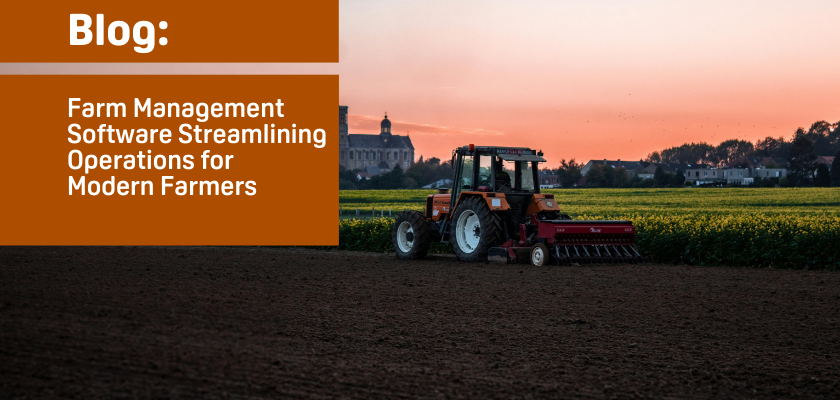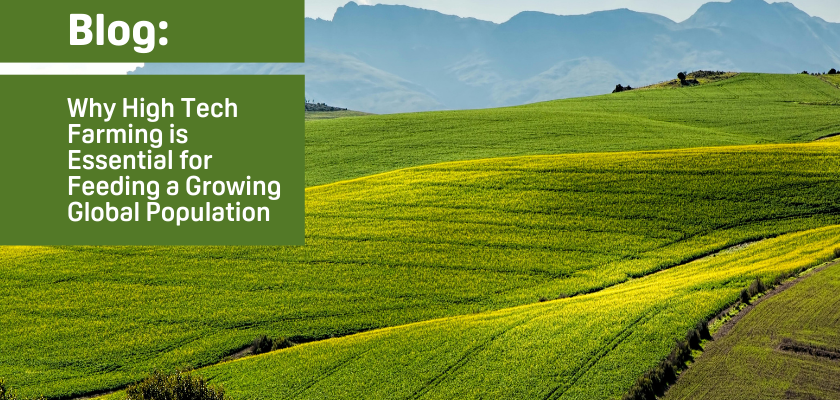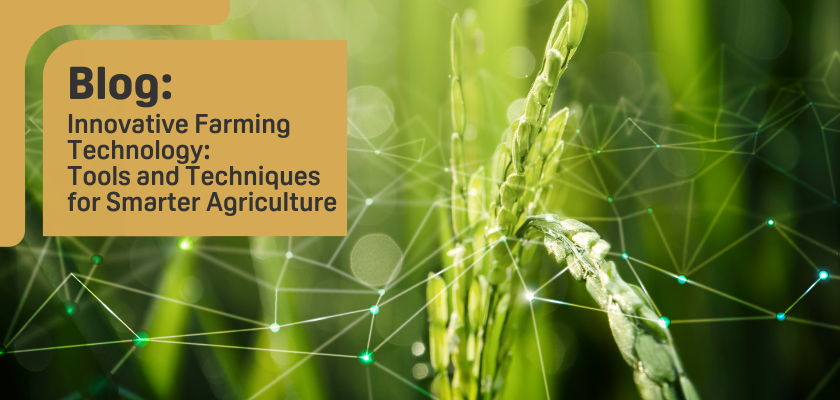

Exploring Regenerative Agriculture
Regenerative agriculture is emerging as a beacon of hope in the global effort to combat climate change, aiming to make agriculture a part of the solution rather than a cause. It represents a shift toward a resilient and sustainable future where the land we cultivate helps heal the planet it sustains.
Published on 28 September 2023
Regenerative agriculture is a revolutionary farming approach focused on renewing our ecosystems. It revolves around nurturing soil health, capturing atmospheric carbon dioxide, promoting biodiversity, and optimizing water management. Unlike conventional farming, regenerative agriculture aims to improve resources rather than deplete them. Restorative farming is about making farmland healthier, more diverse, and more productive.
There is no one regenerative agriculture definition. While it is adaptable to each farm's unique conditions, it's a methodology guided by consistent principles and practices. These practices include:
1. conservation tillage,
2. cover cropping,
3. planned livestock grazing,
4. crop rotation,
5. reduced synthetic fertilizers,
6. increasing soil organic matter
Regenerative farming combines traditional wisdom with modern solutions. It heals the land and provides opportunities for farmers to generate revenue while contributing to climate change mitigation efforts.
The Benefits of Embracing Regenerative Agriculture
When considering restorative agriculture, we uncover numerous benefits extending beyond farmland. This innovative approach to farming provides countless ecological, financial, and social rewards.
-
Ecological Benefits: Profound soil health improvement is at the heart of regenerative agriculture. Promoting soil biodiversity and enriching organic matter strengthens soil vitality while combating erosion and degradation. Healthy soils rich in organic matter also act as sponges, retaining moisture efficiently and preventing runoff. It allows the soil to thrive in the face of both floods and droughts.
-
Financial Benefits: Beyond its ecological wonders, regenerative agriculture is a smart financial choice and an investment in sustainable success. Research has shown that regenerative agriculture can significantly increase profits over time by decreasing input costs. It promotes reliable returns, natural capital growth, and increased profit margins.
-
Social Benefits: Communities and society as a whole feel the ripple effects of regenerative agriculture. Farmers who take this approach often join a tight-knit network and experience heightened well-being.
Regenerative agriculture relies on thriving ecosystems that clean the air, regulate the climate, provide clean drinking water, and pollinate crops. It keeps important ecosystem services active, strengthens social fabrics, and maintains the delicate balance of our connected world.
Unveiling the Potential of Regenerative Agriculture: Addressing Key Questions
Regenerative agriculture raises several questions. One of these questions is its connection to organic farming. Another question is its ability to combat climate change. Lastly, there is the question of whether it can replace traditional farming.
Is Regenerative Farming Organic?
The relationship between regenerative farming and organic agriculture often sparks questions about their similarities and differences. While they share a commitment to sustainability, they follow distinct paths.
Organic agriculture, governed by strict regulations and bearing the organic label, adheres to a set of standardized rules. It prohibits the use of genetically engineered seeds, synthetic fertilizers, and most synthetic pesticides. This label ensures that the food you purchase meets specific production standards. However, organic practices primarily focus on eliminating synthetic inputs and do not inherently address soil regeneration.
In contrast, regenerative agriculture is more about principles than prescriptions. It centers on outcomes, emphasizing improvements in soil health and the overall ecosystem's quality. Unlike organic farming, regenerative agriculture is flexible and adjusts to each farm's specific conditions, resources, and ecological dynamics. It's not a one-size-fits-all approach but a flexible framework that empowers farmers to make land-specific decisions.
While both approaches have their merits, regenerative agriculture promotes soil health and ecosystem vitality. It aims to restore the land, build resilience, and secure a healthier future for soil, water, plants, animals, and people. Organic farming is important for sustainability, but regenerative agriculture goes beyond that by actively restoring the land we rely on.
Can Regenerative Agriculture Feed the World?
Can regenerative agriculture feed the world's growing population? This is the debate in sustainable farming discussions.
Until now, the desire to maximize available yields has driven large-scale agriculture. Consequently, the industry has damaged arable land and depleted natural resources at an alarming rate. If we continue business as usual, we risk reducing our capacity to grow crops in the future. While we need large-scale production, regenerative ag practices can help achieve the same goal while tending to the ecosystem.
Many people associate regenerative, sustainable, or organic farming with small-scale, diversified farming practices. This narrative often raises concerns about whether the world population will go hungry if we move to environmentally friendly systems. But it is crucial to challenge this assumption.
Regenerative agriculture holds great promise in feeding the world while protecting our environment. It emphasizes improving soil quality, biodiversity, and overall ecosystem health. This is not a one-size-fits-all approach but a flexible framework that adapts to each farm's unique circumstances.
Regenerative farming practices such as cover cropping, crop rotation, alternating grazing, and animal integration are crucial. They help improve soil quality, rebuild water cycles, and sequester carbon in the atmosphere. These practices are important in combating climate change and protecting soil health.
Doktar offers a holistic approach. We integrate technological solutions into the framework. Examples include:
-
agricultural sensor stations that enable optimized irrigation,
-
digital soil analysis devices that allow farmers to monitor improvements in soil health and optimize fertilizer usage,
-
automated pest traps that reduce the need for excessive spraying by providing precise usage recommendations.
These innovations offer the potential to increase efficiency, minimize resource consumption, and ensure sustainable crop yields.
Can Regenerative Agriculture Reverse Climate Change?
Regenerative agriculture is emerging as a beacon of hope in the global effort to combat climate change. Conventional farming practices often contribute to greenhouse gas emissions. Regenerative agriculture has the potential to go beyond mere sustainability and actively reverse the course of climate change.
The core idea is to make agriculture absorb more carbon than it emits. We can transform agriculture into a carbon sink rather than a carbon source. By including practices like cover cropping and reduced or no-till farming, regenerative agriculture maximizes carbon sequestration in the soil. This removes carbon dioxide from the atmosphere and enhances soil health and resilience.
Throughout history, agricultural activities have resulted in significant carbon losses from soils. This has been primarily due to deforestation, intensive tillage, monoculture cropping, and the heavy use of chemical inputs. Regenerative agriculture seeks to undo this damage by rebuilding soil health and restoring the delicate balance of ecosystems.
Debates exist about the extent of carbon sequestration achievable through regenerative agriculture. Despite this, there is growing consensus among scientists that it can still make a substantial contribution to climate mitigation. This approach is not about replacing other critical climate solutions but complementing them. It offers a holistic way to address climate change while ensuring sustainable and resilient food production.
In essence, regenerative agriculture aims to make agriculture a part of the solution to climate change rather than a cause. It represents a shift toward a resilient and sustainable future where the land we cultivate helps heal the planet it sustains.
For those interested in exploring how Doktar's innovative solutions can transform your agricultural practices, visit our website for detailed information on all our products. Stay updated with the latest developments by following us on Instagram and LinkedIn, where we share insights, tips, and updates about our technologies and their impact on modern farming.
References:
- https://www.climatefarmers.org/blog/what-is-regenerative-agriculture-and-how-does-it-benefit-your-farm/
- https://www.ift.org/news-and-publications/digital-exclusives/organic-versus-regenerative-agriculture?token=00000000-0000-0000-0000-000000000000
- https://www.noble.org/regenerative-agriculture/organic-vs-regenerative-agriculture/
- https://seekingalpha.com/article/4527543-food-conundrum-can-regenerative-agriculture-feed-the-world
- https://rebellion.global/blog/2021/03/04/regenerative-agriculture-feed-world/

Farm Management Software Streamlining Operations for Modern Farmers
Farm management software has become an invaluable asset in the digitalization of modern agriculture, offering tools to improve efficiency, enhance resource allocation, and support data-driven decision-making. With platforms like Doktar's FieldFlow, Filiz, and CropMap, farmers can adopt sustainable and regenerative agricultural practices, addressing the challenges of today while securing a productive future. Whether managing a small farm or a large agribusiness, adopting farm management software can streamline operations, boost profitability, and promote long-term sustainability in agriculture.

Why High-Tech Farming is Essential for Feeding a Growing Global Population
High-tech farming combines AI, IoT, and precision agriculture to boost crop yields sustainably. It optimizes resource use, minimizes environmental impact, and supports food security. With tools like Doktar’s Orbit, Filiz, and CropMap, farmers can make data-driven decisions that enhance productivity and protect future agricultural resources.

Innovative Farming Technology: Tools and Techniques for Smarter Agriculture
Innovative farming technology leverages IoT, AI, and precision agriculture to optimize resource use, boost crop yields, and enhance sustainability. Tools like Doktar’s Filiz sensor, PestTrap, CropMap, and Orbit empower farmers with data-driven insights, enabling efficient, eco-friendly practices that promote resilience and sustainable food production for future generations.
